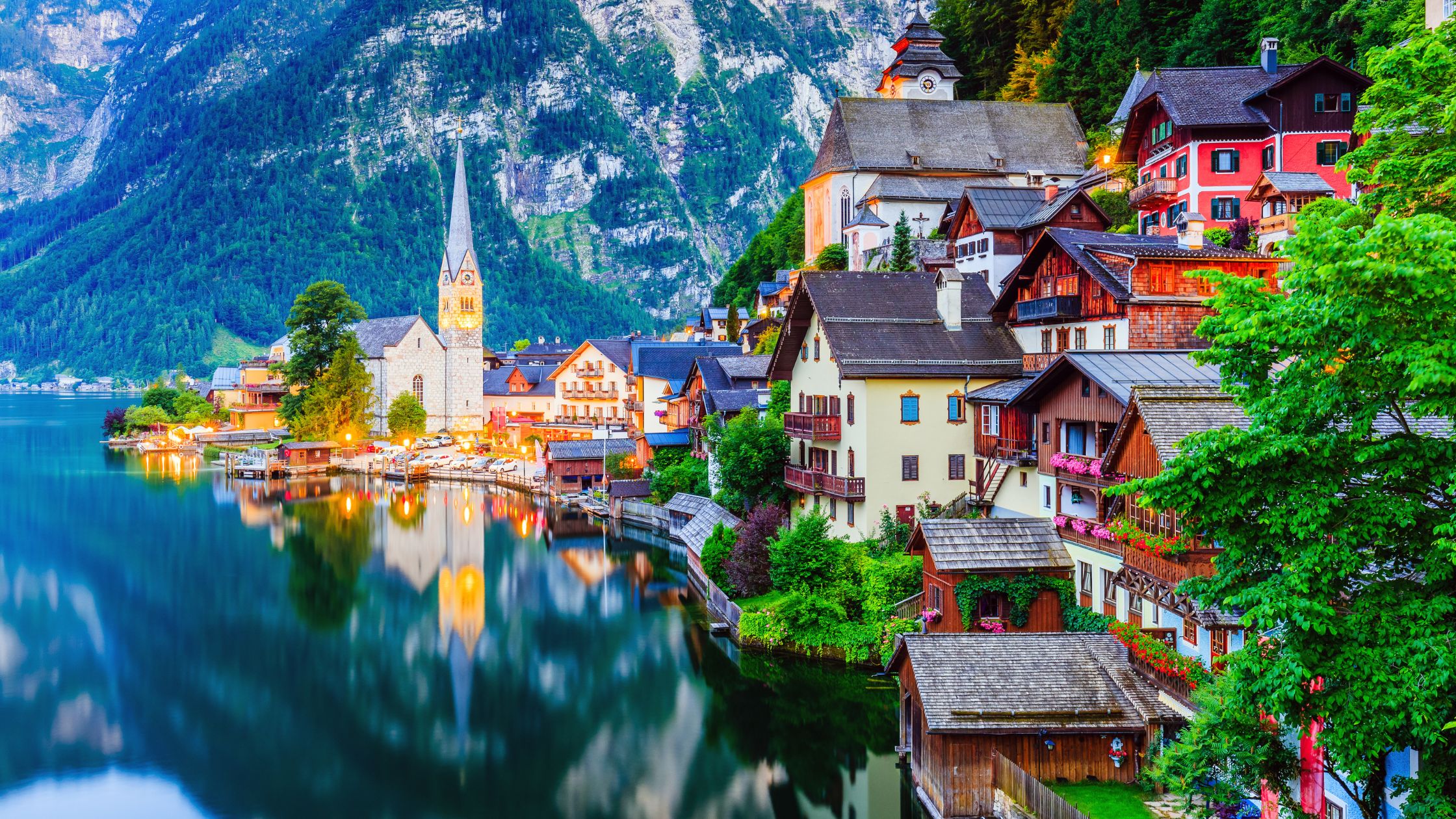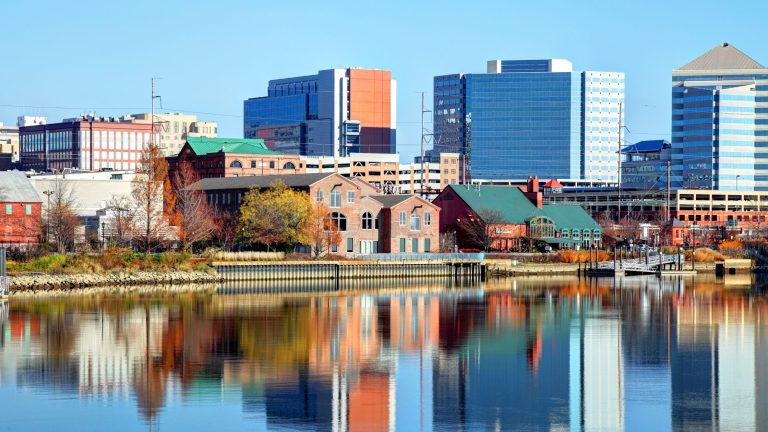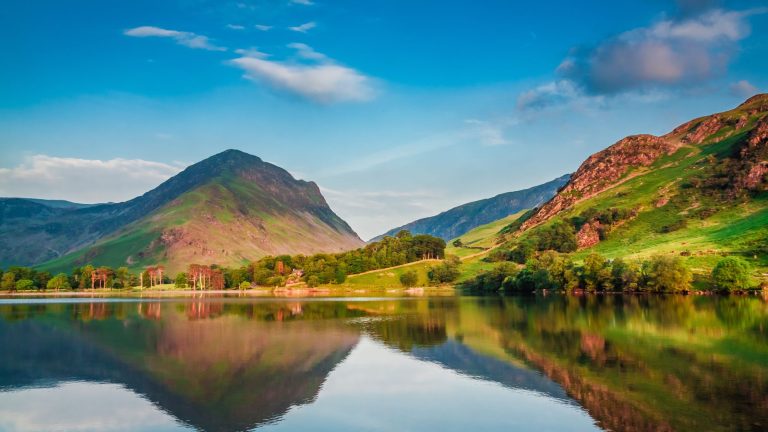Austria’s Essential Experiences 2025-2026
Austria orchestrates a symphony of experiences that crescendos differently with each passing season, revealing new movements and refrains as 2025 unfolds into 2026.
From the Backstreet Boys harmonizing beneath Schladming’s December stars to revolutionary Gustav Klimt exhibitions unveiling hidden layers through AI technology to the pristine silence of dawn breaking over Wolfgangsee, Austria transforms familiar landscapes into extraordinary stages for you and your family to make some alpine memories.
Where Alpine Lakes Meet Imperial Splendor and Tomorrow’s Adventures
This year brings particular magic: newly unveiled ski lifts whisking adventurers to untouched powder fields, reimagined museums presenting centuries-old masterworks through contemporary lenses, and lake destinations awakening with infrastructure that honors both heritage and innovation. Whether you’re gliding across Wörthersee’s summer-warmed waters or ascending the revolutionary tricable ropeway at Ischgl, 2025-2026 promises Austria at its most compelling.
Vienna: Where Centuries Converge in 2025
The Imperial Canvas Reimagined
The capital pulses with renewed energy as 2025 delivers unprecedented cultural offerings. At the Lower Belvedere, technology meets artistry in “Pigment & Pixel” (through September 2025), where infrared reflectography and AI reconstruction reveal Gustav Klimt’s creative process layer by mesmerizing layer. Most remarkably, the lost Faculty Paintings—destroyed in 1945’s flames—return to life through cutting-edge color reconstruction, their monumental forms projected across the Orangerie’s ceiling in a triumph of digital archaeology.
Schönbrunn Palace continues its reign as Austria’s most visited attraction, its 1,441 rooms telling Habsburg stories through fresh perspectives. The morning exercise sessions at the Spanish Riding School now incorporate augmented reality elements, allowing visitors to understand the intricate choreography of the Lipizzaner stallions through historical context overlays. Book the new “Imperial Dawn” experience (launching March 2025) for exclusive 7 AM access to the State Rooms, when oblique light transforms gilded surfaces into liquid gold.
Museums Unveiling Hidden Narratives
The Kunsthistorisches Museum presents a revelation from September 2025 to February 2026: Michaelina Wautier, the Flemish Baroque master whose genius was obscured by centuries of misattribution. Twenty-nine paintings emerge from storage vaults and private collections, positioning her alongside Peter Paul Rubens and Sir Anthony van Dyck in a long-overdue recognition. The museum’s Dome Hall Café—arguably Vienna’s most beautiful dining space—offers a new tasting menu inspired by 17th-century court recipes, modernized by Michelin-starred chef Konstantin Filippou.
Winter Magic Transformed
Vienna’s winter season 2025-2026 introduces immersive experiences that surpass traditional Christmas markets. The Prater Winter Market at Riesenrad Square (November 21, 2025 to January 6, 2026) features Wednesday-to-Sunday concerts beneath the giant Ferris wheel, with special midnight performances on New Year’s Eve extending until 2 AM. The Rathausplatz transforms into the Small Viennese Ice Dream, where 9,500 square meters of ice wind through illuminated forest installations designed by contemporary artist Olafur Eliasson.
Note that Maria-Theresa Square’s (Maria-Theresien-Platz) beloved Christmas Village remains closed through 2026 for major renovations, but the surrounding museums stay accessible, offering warm refuge and cultural enrichment between market visits.
Salzburg & The Salzkammergut
Wolfgangsee: The Classic Reimagined
The triumvirate of St. Wolfgang, St. Gilgen, and Strobl enters 2025 with renewed vigor. The SchafbergBahn cog railway, celebrating its 132nd anniversary, debuts glass-floored observation cars that transform the ascent into vertical theater. At 1,783 meters, the summit restaurant now features a rotating glass pavilion designed by Snøhetta architects, offering 360-degree views while you dine on modern interpretations of Salzburger Nockerl.
Hotel Weißes Rössl, the legendary “White Horse Inn,” completes its sensitive renovation in spring 2025, preserving its 1878 character while introducing lake-source heating systems and underwater observation lounges extending into Wolfgangsee’s crystalline depths. The new “Composers’ Suite” features a Bösendorfer piano where visiting musicians offer intimate concerts overlooking the lake—book for July’s Salzburg Festival spillover performances.
Hallstatt: A Village in Transition
Critical timing note for 2025-2026 visitors: the Hallstatt Salt Mines close for extensive renovation from September 2025 to June 2026. This €15 million project will introduce multimedia installations revealing 7,000 years of salt mining through holographic miners and augmented reality experiences. During closure, the village offers compensatory experiences: dawn photography workshops capturing mist-veiled spires, exclusive access to normally restricted Bronze Age archaeological sites, and guided tours through the Dachstein Ice Caves’ newly discovered chambers.
The Skywalk platform remains operational, its glass viewing platform suspended 360 meters above the village offering vertigo-inducing perspectives. New for 2025: “Stargazer Nights” with portable telescopes and astronomer guides (October through March).
The Quiet Lakes: Attersee and Traunsee
While crowds flock to famous waters, discerning travelers discover Attersee’s 46-square-kilometer expanse, where Gustav Klimt spent summers between 1900 and 1916. The new Klimt Trail app (launching May 2025) uses AR to overlay his paintings onto their real-world inspirations—stand where he stood, see what he saw, understand how landscape became art.
Traunsee’s dramatic personality—carved by glaciers, crowned by the Traunstein’s limestone fortress—attracts sailors who appreciate challenging winds and water that plunges to 191 meters. The renovated Rathaussteg pier in Gmunden now features an underwater gallery 10 meters below surface, where lake trout glide past viewing windows while you sip wine from nearby Weingut Eder.
Zell am See-Kaprun: Four Seasons of Superlatives
The Lake-Glacier Duet
Zeller See performs a different movement each season, but 2025-2026 brings particular innovations. The Grand Hotel Zell am See unveils its “Lake Level Spa” in June 2025—treatment rooms built at water level where glass walls dissolve boundaries between interior and lake.
The Schmittenhöhe cable car introduces “First Light” rides starting 30 minutes before sunrise, limited to 20 guests who ascend in darkness to witness dawn breaking over 30 three-thousand-meter peaks. The summit restaurant’s new chef, recruited from Copenhagen’s Noma, creates breakfast experiences that challenge conventions—imagine reindeer moss garnished with lake-foraged herbs and glacial salt.
Kaprun’s Glacier Revolution
The Kitzsteinhorn Glacier, a new “Ice Gallery,” burrows 30 meters into the glacier, with its walls revealing ice layers dating to the Roman Empire. LED installations by artist James Turrell showcase time and light, while the temperature-constant environment hosts year-round concerts with acoustics unlike anywhere on Earth.
The Maiskogel’s Maisi Flitzer alpine coaster extends by 400 meters for summer 2025, adding a 360-degree loop that generates enough G-force to qualify as Austria’s most thrilling non-motorized experience. Evening rides under floodlights (July-August) conclude with lakeside barbecues at the mountain station.
Tyrol: Where Mountains Touch Tomorrow
Innsbruck’s Urban Alpine Innovation
The Nordkette Cable Car, already remarkable for whisking passengers from city center to 2,256 meters in 20 minutes, introduces augmented reality headsets in 2025 that overlay historical photographs onto current views. See how glaciers have retreated, how the city has evolved, how avalanche paths have been tamed, blending education with entertainment.
The new “Twilight Transit” package (launching December 2025) combines evening cable car access with dinner at the Seegrube restaurant and overnight stays in glass igloos at Hafelekar summit. Wake to sunrise illuminating the Inn Valley while eagles soar at eye level—wilderness accessibility redefined.
Achensee: The Tyrolean Fjord’s Evolution
Austria’s largest lake in Tyrol enters 2025 with infrastructure that honors its Nordic character. The new Achensee Navigation Company fleet includes silent, hydrogen-powered vessels that glide across the 6.8-square-kilometer surface without disturbing the profound quiet that defines morning passages.
Hotel Entners am See pioneered the region’s first floating sauna village—six wooden structures tethered to the shore, each accommodating four guests for private sessions that conclude with ladder descents into the perpetually cool (maximum 20°C in August) waters. The hotel’s partnership with the Tyrolean Blind Association offers “darkness dining” experiences where other senses heighten to appreciate subtle flavors of char fished that morning.
The Rofanbahn cable car unveils its “Via Aqua” trail in June 2025—a water-themed hiking path featuring natural pools, waterfalls, and other unique spaces where the sound of flowing water provides nature’s soundtrack. The trail’s highlight: a cantilevered platform extending over a 200-meter drop, with a glass floor revealing the lake far below.
Carinthia: Austria’s Mediterranean Side
Wörthersee: Glamour Amplified
Austria’s warmest major lake (up to 27°C in summer) attracts a clientele that appreciates both natural beauty and sophisticated infrastructure. The Falkensteiner Schlosshotel Velden completes its “Aqua Palace” expansion in May 2025—an adults-only wing featuring infinity pools that appear to merge with the lake, private beach cabanas with champagne service, and Austria’s first underwater hotel suite with 270-degree subaqueous views.
The Pyramidenkogel observation tower, already Europe’s highest wooden structure at 100 meters, adds a revolutionary feature for 2025: a glass elevator on the exterior that rotates during ascent, providing ever-changing perspectives. The existing slide—a 120-meter spiral descent—now offers “night flights” on summer Saturdays, when LED strips create a river of light through darkness.
Millstätter See: A Little Water Music
The second-largest lake in Carinthia maintains its reputation for understated elegance. The annual Millstätter See Music Weeks expand in 2025 to include floating concerts—chamber orchestras performing on specially designed barges that drift slowly across the lake while audiences follow in silent electric boats. The acoustic properties of water-surrounded performance create intimacy impossible in traditional venues.
Winter Sports Revolution 2025-2026
The Next Generation of Austrian Skiing
The 2025-2026 ski season introduces technological leaps across Austria’s 400+ ski areas. Ischgl’s new 28-person tricable ropeway (December 2025) represents Europe’s most advanced lift technology, with heated seats, Wi-Fi, and glass floors revealing the valley 500 meters below. The resort’s Top of the Mountain Opening Concert (November 29, 2025) launches a season that extends until May, with spring corn snow providing different pleasures than winter powder.
Schladming-Dachstein makes history by hosting the Backstreet Boys for three concerts (December 5-7, 2025) at the valley station—an amphitheater carved from snow accommodating 15,000 fans. The resort’s new AI-powered avalanche prediction system allows opening previously inaccessible terrain, adding 30% more off-piste skiing for advanced riders.
St. Anton am Arlberg, celebrating its reputation as the “cradle of alpine skiing,” introduces the Flexenbahn’s successor in 2026—a funitel (wind-stable gondola) accessing the Albona bowl’s 2,650-meter peaks. The new terrain adds 20 kilometers of runs, all above treeline where snow remains pristine through April.
Glacier Skiing
Austria’s eight glacier ski areas lead environmental initiatives while maintaining world-class skiing. The Stubai Glacier’s new “Zero Emission Zone” uses only renewable energy, while snow-farming techniques preserve glacier mass. Hintertux, offering Austria’s only year-round skiing, introduces biodegradable lift tickets embedded with wildflower seeds that you can plant in spring and watch your ski memories bloom.
The Kaunertal Glacier road, one of Austria’s most spectacular alpine drives, goes car-free on “Silent Sundays” starting January 2026. Electric shuttles transport skiers while the reduced noise allows wildlife viewing where ibex, golden eagles, and bearded vultures may be seen from the slopes.
Cultural Pinnacles 2025-2026
Festivals Reimagined
The Salzburg Festival (July-August 2025) celebrates its 105th anniversary with a radical reinterpretation of Mozart’s “Magic Flute” staged simultaneously in the Felsenreitschule and on a floating platform on the Salzach River, with audiences moving between venues mid-performance.
Bregenz Festival’s floating stage on Lake Constance presents Puccini’s “Madame Butterfly” (July-August 2025) with a set inspired by origami. Massive paper structures transformed throughout the performance, reflected in the lake’s surface to create doubled imagery. The 7,000-seat lakeside arena introduces heated seats and personal audio systems providing translations in 12 languages.
The Ars Electronica Festival in Linz (September 2025) explores “The Intelligent Lake”—how bodies of water communicate through chemical signals, how AI interprets these messages, and what lakes might tell us if we learned their language. Installations along the Danube translate water quality data into sound and light, making the invisible visible.
Museum Exploring The Hraschina Meteorite
The reopening of the Natural History Museum’s meteorite hall (March 2025) showcases the Hraschina meteorite alongside new acquisitions from recent Antarctic expeditions. Interactive displays allow visitors to hold actual space rocks while learning how cosmic impacts may have played a role in shaping some of Austria’s geological features.
The Hraschina meteor fell on May 26, 1751, near Zagreb, which was then part of the Austrian Empire. Many people at the time were awed by this act of God, while others looked upon the event as a scientific mystery.
Burgenland: Wine, Wind, and Water
Neusiedler See: Europe’s Steppe Lake Evolved
Austria’s most unusual lake—so shallow you can walk across much of its 315 square kilometers—enters an exciting phase. The new Neusiedler See Card (launching April 2025) provides unlimited access to boats, bikes, and buses, plus tastings at 20 wineries and entry to cultural sites. The lake’s reed belt, Europe’s second-largest after the Danube Delta, now features elevated boardwalks with bird blinds designed by Herzog & de Meuron architects.
September 2025 brings the inaugural Neusiedler See Wine Marathon—runners navigate vineyard trails while stops feature tastings of Blaufränkisch and Zweigelt instead of water stations. The finish line at Rust rewards participants with a vertical tasting of wines from the town’s 1524-established vineyards.
Wind conditions that attract kitesurfers and windsurfers reach perfection in October, when consistent thermals and fewer tourists create ideal learning conditions. The new Podersdorf Beach Club (opening May 2025) offers equipment rental, instruction, and a restaurant where every table faces sunset over the water.
The Future of Austrian Lake Tourism
Digital Innovation Meets Natural Beauty
Lake.com’s partnership with Austrian tourism boards introduces the “Smart Lake Pass” in summer 2025—a digital key accessing everything from hotel rooms to boat rentals, restaurant reservations to cable car priority boarding. AI-powered itinerary planning considers weather forecasts, crowd levels, and personal preferences to optimize each day.
Virtual reality previews, available at major train stations, let visitors “test” experiences before committing—stand atop the Dachstein, swim in Wörthersee, or attend the Vienna Opera Ball without leaving the station. These aren’t substitutes for reality but appetizers that build anticipation.
Electric Boat Fleets
By 2026, every major Austrian lake destination commits to carbon neutrality. Electric boat fleets, shore power for hotels, and comprehensive recycling systems become invisible infrastructure supporting pristine environments. The new “Lake Guardian” program employs local youth as environmental educators and water quality monitors, featuring tourism that gives back to communities.
Your Austrian Moment Awaits
Austria in 2025-2026 transcends typical destination experiences. Whether you’re witnessing Klimt’s lost masterpieces reimagined through technology, descending Schladming’s slopes to Backstreet Boys rhythms, floating in Wörthersee’s warmth while snow caps surrounding peaks, or discovering Traunsee’s underwater galleries, each moment offers that rare combination of natural majesty and human creativity that defines Austrian excellence.
The lakes serve as more than scenic backdrops—they’re protagonists in narratives that span from Hallstatt’s Bronze Age origins to Achensee’s hydrogen-powered future. The mountains frame more than views—they provide stages for human achievement, from the Hahnenkamm’s death-defying downhill to gentle family snow gardens where tomorrow’s Olympians take first turns.
Find a great lake house to stay in the countryside or a beautiful apartment on the river in one of Austria’s opulent cities on Lake.com. Where will you stay? Let us know!






